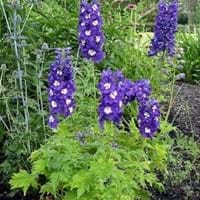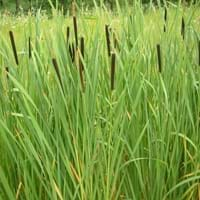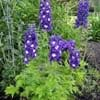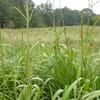Life Span
Perennial
Perennial
Type
Flowering Plants, Ornamental Plants, Shrubs
Aquatics
Origin
Africa
World/Pandemic, North America, Caribbean, Europe, Northern Africa, Asia
Types
Not Available
Not Available
Number of Varieties
Not Available
Habitat
gardens, meadows
Boggy areas, Near ponds
USDA Hardiness Zone
Not Available
2-12
AHS Heat Zone
12 - 6
12-1
Sunset Zone
Not Available
21,22
Habit
Upright/Erect
Clump-Forming
Minimum Width
Not Available
Flower Color
Blue, Indigo, Lavender, Light Purple
Sienna, Chocolate
Flower Color Modifier
Bicolor
Not Available
Fruit Color
Non Fruiting Plant
Not Available
Leaf Color in Spring
Green
Green
Leaf Color in Summer
Light Green
Green
Leaf Color in Fall
Green, Yellow green
Not Available
Leaf Color in Winter
Green, Light Yellow, Tan
Green
Leaf Shape
Palmate and toothed
Grass like
Plant Season
Spring, Summer, Fall, Winter
Summer, Fall
Sunlight
Full Sun, Partial Sun
Full Sun, Partial Sun
Type of Soil
Clay, Loam, Sand
Loam, Sand
The pH of Soil
Acidic, Neutral, Alkaline
Acidic, Neutral, Alkaline
Soil Drainage
Well drained
Poorly Drained
Bloom Time
Not Available
Summer
Tolerances
Heat And Humidity
Wet Site
Where to Plant?
Ground, Pot
Container, Ground
How to Plant?
Seedlings, Stem Cutting
Divison, Seedlings
Plant Maintenance
Medium
Medium
Watering Requirements
It cannot sustain wet-feet, Keep ground moist, Requires regular watering, Water more in summer
Does not require regular watering, Water Deeply
In Summer
Lots of watering
Lots of watering
In Spring
Moderate
Moderate
In Winter
Average Water
Average Water
Soil pH
Acidic, Neutral, Alkaline
Acidic, Neutral, Alkaline
Soil Type
Clay, Loam, Sand
Loam, Sand
Soil Drainage Capacity
Well drained
Poorly Drained
Sun Exposure
Full Sun, Partial Sun
Full Sun, Partial Sun
Pruning
Cut away fading foliage, Do not prune during shooting season, Remove damaged leaves, Remove deadheads
Cut limbs, Remove damaged leaves, Remove dead branches, Remove dead leaves, Remove dead or diseased plant parts
Fertilizers
High-phosphorous fertilizers used, Organic Flower Fertilizer
All-Purpose Liquid Fertilizer, Apply 5-10-5 amounts, Apply N-P-K
Pests and Diseases
Bacterial leaf spot, fungus, Mealybugs
Red blotch
Plant Tolerance
Heat And Humidity
Wet Site
Flower Petal Number
Single
Not Available
Edible Fruit
No
Not Available
Foliage Texture
Fine
Coarse
Foliage Sheen
Matte
Matte
Attracts
Butterflies
Birds
Allergy
Severe allergen, Skin irritation, Skin rash, Throat itching, Vomiting
Skin rash
Aesthetic Uses
Beautification, Borders, Showy Purposes, Used for decorating walls, fences, gates, hedges, etc.
Ground Cover, Showy Purposes
Beauty Benefits
No Beauty Benefits
Not Available
Environmental Uses
Air purification
Air purification, soil stabilisation
Medicinal Uses
No Medicinal Use
anticoagulant, Astringent, Burns, Diuretic, Emmenagogue, Galactogogue, Haemostatic, Miscellany, Refrigerant, Sedative, Tonic, Vulnerary
Part of Plant Used
Flowers
Flowers, Leaves, Root, Seeds, Stem
Other Uses
Used in making blue ink
Fibre, For making oil, used for weaving hats, Used in biomass, Used in paper industry, Weaving into Mats and Bags
Used As Indoor Plant
No
No
Used As Outdoor Plant
Yes
Yes
Garden Design
Edging, Feature Plant
Dried Flower/Everlasting, Water Gardens, Wildflower
Botanical Name
Delphinium elatum
TYPHA latifolia
Common Name
Alpine delphinium, Delphium, Candle larkspur, Siberian larkspur, Musk Larkspur,
Broadleaf Cattail, Common Cattail
In Hindi
अल्पाइन Delphinium
Broadleaf Cattail
In German
Alpine Delphinium
Laub- Cattail
In French
Alpine Delphinium
broadleaf Cattail
In Spanish
Alpine Delphinium
Espadaña de hoja ancha
In Greek
Alpine Δελφίνιο
πλατύφυλλων Cattail
In Portuguese
Alpine Delphinium
broadleaf Tifa
In Polish
Alpine Delphinium
Broadleaf Cattail
In Latin
Alpine Delphinium
broadleaf Cattail
Phylum
Tracheophyta
Magnoliophyta
Class
Magnoliopsida
Liliopsida
Order
Ranunculales
Typhales
Family
Ranunculaceae
Typhaceae
Clade
Angiosperms, Eudicots
Angiosperms, Commelinids, Monocots
Tribe
Not Available
Not Available
Subfamily
Not Available
Pitcairnioideae
Number of Species
Not Available
Importance of Alpine Delphinium and Broadleaf Cattail
Want to have the most appropriate plant for your garden? You might want to know the importance of Alpine Delphinium and Broadleaf Cattail. Basically, these two plants vary in many aspects. Compare Alpine Delphinium and Broadleaf Cattail as they differ in many characteristics such as their life, care, benefits, facts, etc. Every gardener must at least have the slightest clue about the plants he wants to plant in his garden. Compare their benefits, which differ in many ways like facts and uses. The medicinal use of Alpine Delphinium is No Medicinal Use whereas of Broadleaf Cattail is anticoagulant, Astringent, Burns, Diuretic, Emmenagogue, Galactogogue, Haemostatic, Miscellany, Refrigerant, Sedative, Tonic and Vulnerary. Alpine Delphinium has beauty benefits as follows: No Beauty Benefits while Broadleaf Cattail has beauty benefits as follows: No Beauty Benefits.
Compare Facts of Alpine Delphinium vs Broadleaf Cattail
How to choose the best garden plant for your garden depending upon its facts? Here garden plant comparison will help you to solve this query. Compare the facts of Alpine Delphinium vs Broadleaf Cattail and know which one to choose. As garden plants have benefits and other uses, allergy is also a major drawback of plants for some people. Allergic reactions of Alpine Delphinium are Severe allergen, Skin irritation, Skin rash, Throat itching and Vomiting whereas of Broadleaf Cattail have Skin rash respectively. Having a fruit bearing plant in your garden can be a plus point of your garden. Alpine Delphinium has no showy fruits and Broadleaf Cattail has showy fruits. Also Alpine Delphinium is flowering and Broadleaf Cattail is flowering. You can compare Alpine Delphinium and Broadleaf Cattail facts and facts of other plants too.





